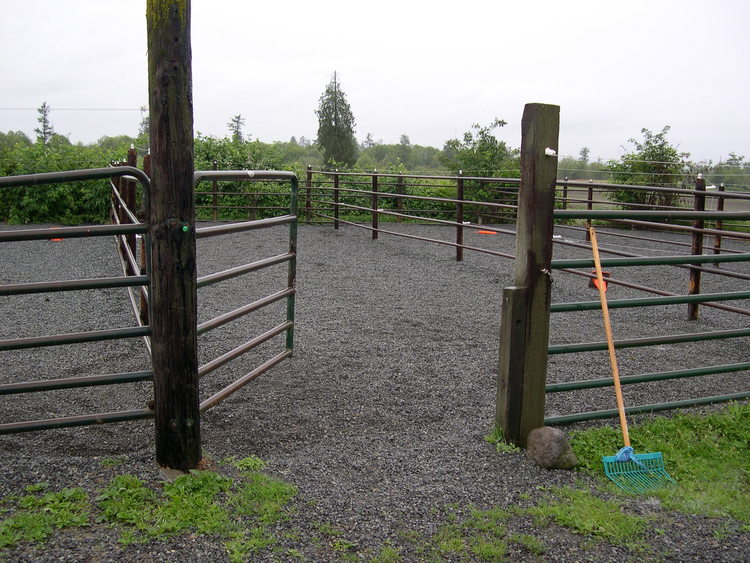Fall is Here, Sound Horsekeepers
/Fall is officially here. Are you and your horses ready? Now is the time to prepare for the upcoming rainy season here in western Washington. Here are a few tips and tricks to beat the winter weather this year and establish more permanent solutions for next year.
Heavy Use Area (HUA)
As we lose daylight, don’t find yourself doing chores in the dark. Install lights now for chore efficiency and safety. Have a routine in place, this will make chores seem easier and more manageable and your horses will become accustomed to it as well.
Update or create a paddock for winter confinement. Known as a Heavy Use Area (HUA) or “Sacrifice” Area, this is an area you “sacrifice” to keep your pastures healthy and mud free. Horses should be kept in confinement areas throughout the wet season. Saturated soils and dormant plants cannot survive continuous grazing and trampling. When soils are wet they are easily compacted, suffocating the roots of grass plants and doing long-term damage to vital air and water channels in the soil. A Heavy Use Area or Sacrifice paddock is a place where your horse can be outside without negatively impacting pastures. An HUA normally uses materials such as gravel, sand or hog fuel to create a mud free environment for your horses when the weather doesn’t permit them to be on pastures. It’s also great to use similar materials on walkways and around gates.
To keep your HUA working for you, at least every three days in dry weather, and daily or twice daily in periods of heavy rains. Cleaning manure out of confinement areas is the simplest and most important thing you can do to prevent mud. Horses produce about 50 lbs. of manure a day. If it is left to be trampled into the soil by livestock, it will quickly turn to mud. Place your manure pile in close proximity to your HUA. It will help cut down on chore time and be more efficient. Covering your manure pile will help it decompose faster, reduce mud and odors, and prevent weed seeds from landing on top and contaminating your clean compost. It’s also crucial for protecting water quality. By covering your manure pile, you’ll keep bacteria and nutrients from being washed off of your property and into nearby streams and rivers. Many water bodies in our area exceed the state standard for bacteria and nutrients making them unhealthy for swimming, fishing, and other recreational activities. It is important to take our impact on these shared resources into consideration when we are designing management for our horse properties.
Compost Bins to separate and cover manure
A compost bin system is a great way to manage a manure pile and to aid the composting process. If the pile is not undercover, a tarp is the most inexpensive way to cover your pile. Plan to weight the tarp down with boards to keep it in place.
Do your horses have somewhere to get away from the weather? It’s a great time to get those shelters built or repaired to keep wind and rain off your horses. Place your shelter next to your HUA for constant access. Feeding in a shelter is also recommended as it keeps hay and grain dry.
It is really important to direct water away from high-traffic areas during the winter months. Install gutters and downspouts on barns and shelters to divert clean rain water away from animal confinement areas, stall entryways, and other high-traffic areas. Ideally the outlet for the gutters should send water to a well-vegetated area that does not receive a lot of use. Clean water can also be collected by stock watering tanks, rain barrels or cisterns. Water that exceeds the capacity of stock watering tanks should be diverted away from confinement areas. Be sure to have a backup water supply if you lose water due to a power outage. It’s also important to have a way to supply water when temperatures are freezing.
Winter is on its way, don’t find yourself fighting the weather this year. Prepare now, and think about next year. Your local Conservation District has many resources available to help you implement these practices on your property. Contact us for more information.



